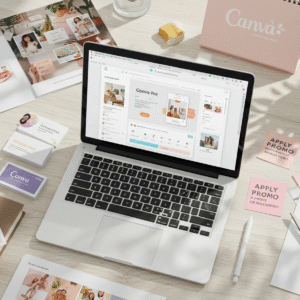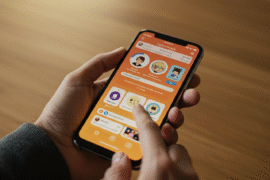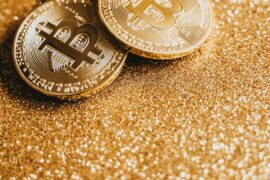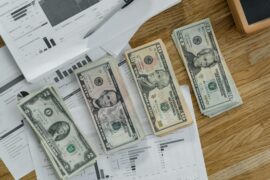This article may contain references to products or services from one or more of our advertisers or partners. We may receive compensation when you click on links to those products or services. Nonetheless, our opinions are our own.
The information presented in this article is accurate to the best of our knowledge at the time of publication. However, information is subject to change, and no guarantees are made about the continued accuracy or completeness of this content after its publication date.
- Summary Highlights
- Introduction
- What Causes Deflation in the Economy?
- The Impact of Deflation on Economic Growth
- Effects on Consumer Spending and Business Investment
- Deflation and Employment Rates
- Basic Economic Indicators to Watch
- Monitoring Price Trends and Consumer Behavior
- Evaluating Debt and Credit Implications
- Final Thoughts
- FAQs
- Recommended Reads
Summary Highlights
- Deflation means the general price level of goods and services keeps dropping over time. When this happens, people have more buying power with their money.
- This is not like inflation. In deflation, the rate of inflation drops below zero. It is measured by things like the Consumer Price Index (CPI).
- Deflation can come from changes in the demand for goods and the supply of money. Economic conditions or rules set by central banks can also cause this.
- If deflation lasts for a long time, it can do a lot of harm. A deflationary spiral can slow down economic growth and hold back people from investing.
- Governments and central banks use their policies to control inflation. They also work to lessen the bad effects of deflation.
Introduction
Deflation happens when prices of things people buy or use go down as time goes on. This makes your money worth more, because you can buy more things with it. At first, this can look good. But it often shows there are bigger problems in the economy. Deflation is not the same as inflation. With deflation, the charge for things drops below zero.
This text looks at why deflation happens and what it does to the economy. It talks about how deflation changes economic growth and how people spend their money. The text also explains how it affects government money rules and talks about how prices of goods can play a part in this.
What Is Deflation?
Deflation is when prices of goods and services go down and keep going down for some time. This means your money is worth more. For example, if you see a smartphone that costs $600 today, but it drops to $500 because fewer people want it or there are too many phones, that is deflation.
Deflation can happen when there is less demand for goods and services. It can also be caused by a fall in how much the economy makes or a lack of money in the market. This is not the same as disinflation. In disinflation, prices still go up, but not as fast as before. In deflation, prices actually go down. You can see this in a negative inflation rate.
At first, having lower prices might look good. But if deflation goes on for a long time, it can hurt the economy. This can cause people to lose their jobs. Also, companies may stop putting money into new things, and there may even be a recession. That is why it is important to know what causes deflation and what it does. This knowledge can help you deal with the problems that come with it.
Deflation vs. Disinflation
Deflation and disinflation are connected but not the same. Both are about inflation rates, but they do not have the same effects.
- Deflation is when the prices of goods and services go down as time goes by. This means the inflation rate is negative.
- Disinflation happens when inflation goes up, but the prices rise more slowly than before. Prices still go up, just not as fast as before.
For example, if inflation goes down from 6% to 2%, this is called disinflation. But if prices fall to less than 0%, like to -2%, that is called deflation.
Deflation can show there are problems in the economy. It can lead to people losing jobs. Disinflation, on the other hand, usually means there is a plan to slow the economy in a careful way. The Consumer Price Index (CPI) is used to tell the difference between deflation and disinflation. It also helps us see how prices change over time.
What Causes Deflation in the Economy?
Deflation happens because of a few things that can change the way people buy and sell. If central banks make the money supply smaller or make interest rates higher, deflation can take place. When the amount of money going around is less, people have less to spend. This brings the total demand down.
Deflation can happen when there are too many goods in the market and not enough people want to buy them. For instance, if factories find new ways to work better using tech, they can make more things. This will put more products out there, and it can cause prices to drop. All these things add up to cause deflation. It can be hard to stop deflation once it starts.
Decrease in Money Supply
A limited money supply is one big reason for deflation. Central banks, such as the Federal Reserve, often raise interest rates to slow down inflation. But doing this can also make deflation worse without planning to do so.
When interest rates go up, people usually save more money and do not borrow as much. This means there is less spending in the economy. Because of that, the need for goods and services goes down. Businesses might have to drop their prices to get more people to buy from them. This makes deflation even worse.
For example, when the Federal Reserve raises interest rates, people take out fewer loans and spend less money. This leads to less money moving around, and that can slow down the economy. If the amount of money keeps dropping, it will be harder to stop prices from falling.
Changes in Aggregate Demand and Supply
Deflation happens when there are changes in both the total demand and supply. On the demand side, if people feel unsure about the economy or if interest rates go up, they may spend less. This will make demand go down. To make up for it, businesses might lower their prices.
On the supply side, when there are new tools or cheaper ways to make things, it can bring more goods into the market. This can make prices go down. For example, when factories find a way to make things better and faster, goods cost less. This often leads to having too much supply and can cause prices to drop.
These changes in demand and supply can hurt the economy and make GDP growth slow down. If these things stay the same, they can make deflation worse. This makes it hard for people and businesses to get back on track.
The Impact of Deflation on Economic Growth
Deflation can have a big impact on economic growth and can even start a downward spiral. At first, deflation might look good because you can buy more with the same amount of money. But if deflation goes on for a long time, it will cut down business profits. When profits drop, many companies will let their workers go, and this causes more people to be out of work.
Deflation makes people and those who invest in the market change what they do. Most people might wait to buy things because they think prices will drop even more later. This wait can stop new investments. It can be tough for the whole economy to get better when this happens. People in charge may also have a hard time bringing back balance to money markets if deflation goes on for a long time.
Voted "Best Overall Budgeting App" by Forbes and WSJ
Monarch Money helps you budget, track spending, set goals, and plan your financial future—all in one app.
Get 50% OFF your first year with code MONARCHVIP
Effects on Consumer Spending and Business Investment
Deflation can change the way people and businesses spend money and invest. When prices fall, people may not buy things right away. They might wait, thinking prices will drop more. This means there is less demand for goods and services, which can hurt businesses.
For businesses, when there is deflation, profits go down. This makes companies spend less on new projects and getting bigger. So, you see the economic growth slow down. Lower prices for things like buildings or stocks make people want to invest less, too, since they think they will not get as much money back.
When housing prices go down, it can make people feel that real estate is not a good investment. This can slow down the economic recovery even more.
Deflation and Employment Rates
Employment rates usually go down in times of deflation. When people spend less money, there is not as much need for goods and services. Companies then cut down on costs by letting some workers go. This leads to more people without jobs and makes the economy worse.
Also, when prices go down, it can make it hard for pay to go up. The people who own the companies often do not want to give out more money when there is deflation. So, people’s pay stays the same for a long time. A good example of this is Japan in the 1990s. That was a time when prices kept falling and pay did not grow for years. This made many workers feel unhappy.
When people have less income, they spend less money. This makes the deflation cycle get even worse. If deflation goes on for a long time, it can be very bad for jobs and the whole economy.
Basic Economic Indicators to Watch
Important signs that may show deflation are these main economic indicators:
- Consumer Price Index (CPI): Shows changes in prices for goods and can help people see when costs go up or down.
- Gross Domestic Product (GDP): Tells us how much the economy is making and can point out when things slow down.
- Inflation Rate: Shows if prices are dropping a lot.
- Asset Bubbles: Warns when things people buy or invest in cost more than they should and are probably going to drop in value.
Watching these signs can help you make better choices about investing your money. You can also change how you spend to fit what is going on.
Monitoring Price Trends and Consumer Behavior
Monitor key indicators such as
- Change in CPI: A steady fall in the CPI can show that there is deflation.
- Consumer Behavior: If people wait to buy because they think the prices will get lower, it is a sign of deflation.
- Price Level of Goods: Big drops in prices for items that people need can change demand in other areas.
Watching these trends can help you get ready for changes in the economy. It lets you plan ahead in case things go up or down. This way, you know what to do and feel more prepared.
Evaluating Debt and Credit Implications
Deflation makes money worth more. Because of this, it is harder for people to pay back large debts. In times of deflation, more people can’t pay what they owe, so defaults go up. Knowing how deflation affects debt is important if you want to make good choices about your money.
For example, after World War I in Germany, falling prices caused many people to stop paying back loans. In times when prices drop, businesses may put off growing. This can happen because it is hard for them to get credit.
Final Thoughts
Knowing about deflation helps manage its effects on the economy. At first, deflation might look positive, but if it lasts long, people may stop spending, businesses may halt investments, and jobs can be lost. By watching economic signs like CPI and inflation rates, people can better understand when deflation happens. Governments and central banks try to avoid deflation by using policies that keep prices stable. For you, understanding deflation means you can be smarter about your money choices and be ready for tough times.
FAQs
What is deflation?
Deflation occurs when the general price level of goods and services consistently drops over time, increasing the purchasing power of money.
How is deflation different from inflation?
While inflation involves rising prices, deflation is the opposite—prices decline, and the inflation rate falls below zero.
What causes deflation?
Deflation can result from a reduced money supply, high interest rates, decreased consumer demand, or excess supply due to technological advances.
What’s the difference between deflation and disinflation?
Disinflation means prices are still rising but at a slower rate. Deflation means prices are actually falling, often signaling deeper economic issues.
How does deflation affect economic growth?
Extended deflation can shrink business profits, delay consumer spending, halt investments, and trigger job losses—slowing economic growth.

Reviewed and edited by Albert Fang.
See a typo or want to suggest an edit/revision to the content? Use the contact us form to provide feedback.
At FangWallet, we value editorial integrity and open collaboration in curating quality content for readers to enjoy. Much appreciated for the assist.
Did you like our article and find it insightful? We encourage sharing the article link with family and friends to benefit as well - better yet, sharing on social media. Thank you for the support! 🍉
Article Title: Is Deflation Bad for the Economy?
https://fangwallet.com/2025/06/10/is-deflation-bad-for-the-economy/The FangWallet Promise
FangWallet is an editorially independent resource - founded on breaking down challenging financial concepts for anyone to understand since 2014. While we adhere to editorial integrity, note that this post may contain references to products from our partners.
The FangWallet promise is always to have your best interest in mind and be transparent and honest about the financial picture.
Become an Insider

Subscribe to get a free daily budget planner printable to help get your money on track!
Make passive money the right way. No spam.
Editorial Disclaimer: The editorial content on this page is not provided by any of the companies mentioned. The opinions expressed here are the author's alone.
The content of this website is for informational purposes only and does not represent investment advice, or an offer or solicitation to buy or sell any security, investment, or product. Investors are encouraged to do their own due diligence, and, if necessary, consult professional advising before making any investment decisions. Investing involves a high degree of risk, and financial losses may occur including the potential loss of principal.
Source Citation References:
+ Inspo
Congressional Research Service. (2025, April 1). Introduction to U.S. Economy: Inflation












































